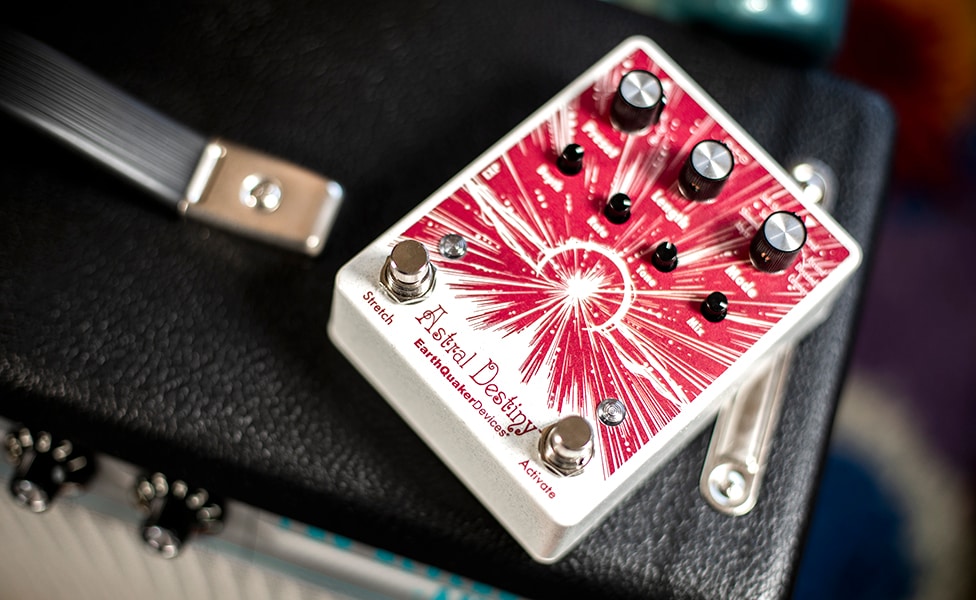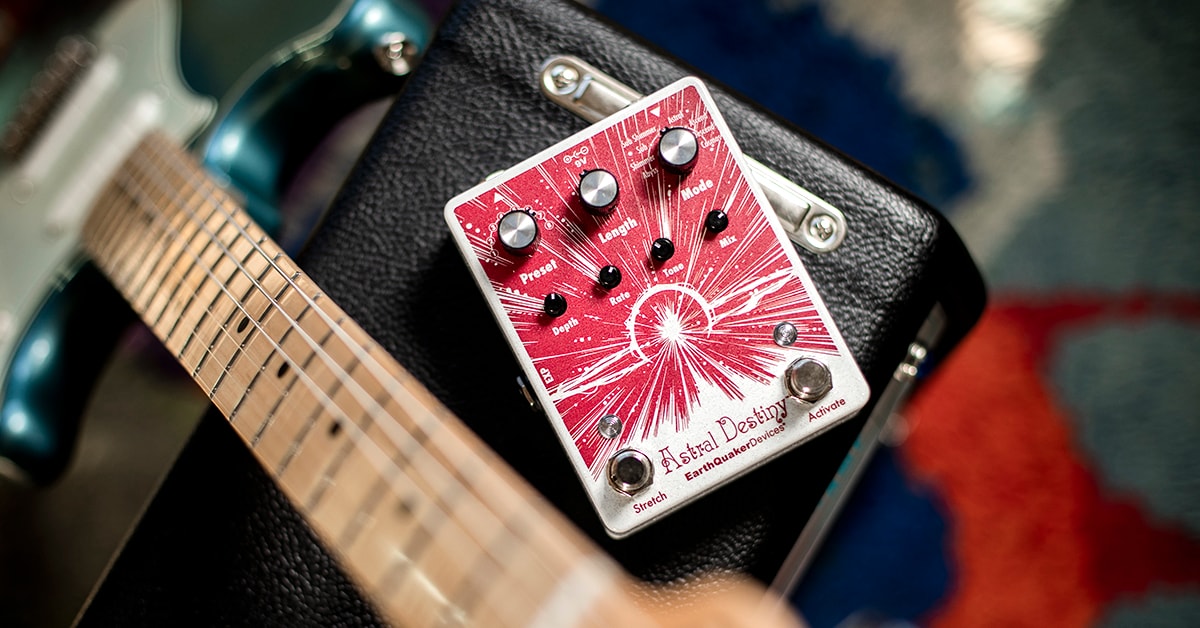The Astral Destiny is a modulated octave reverb pedal from the creative minds at EarthQuaker Devices. It shimmers, stretches, and bends in ways that evoke galactic journeys and glimmering canyons while offering equal amounts of control and surprise. Eight presets range from Sub Shimmer to Cosmos, and there is user control over the reverb decay, chorus, treble EQ, and mix level of the effect, while a unique Stretch footswitch doubles the reverb length and adds a temporary change in pitch. These features combine to create a distinctive effects pedal that is as versatile as it is inspiring.
To further explore the Astral Destiny's technology and design, we spoke with EarthQuaker Devices founder and President Jamie Stillman. We also asked one of today's most adventurous effects explorers, Sarah Lipstate (Noveller), to experiment with its evocative tones and show us around this otherworldly device.
There’s been a popularization around ambient sounds that make big use of shimmer and octave reverbs. How do you anticipate Astral Destiny impacting that sound and fitting into that player’s board?
Jamie Stillman: I tried a lot of the most popular shimmer reverbs while I was in the final development stages of Astral Destiny to see how it compared. I think the Astral Destiny is more experimental than most, so hopefully, it’ll lead to some unexpected ideas and sick new riffs.
Can you walk us through the signal flow inside the pedal?
Stillman: It changes from mode to mode, but it’s generally reverb with octave incorporated into the tails in one of several different ways and a chorus style (blend of wet/dry) modulation. The tone and mix always come after each combo. No two modes really work the same.
Can you speak a bit about the approach to the visual design of the Astral Destiny?
Stillman: Our artist Matt Horak must have made three or four different versions of this art over the years since its original incarnation. We knew we wanted it to be “Astral” in some context but didn't exactly have a real grasp on it until the final stages of the control layout. I was initially thinking something dark because I always think of reverb in blues and blacks, if that makes sense. After our production manager, Mike Stangelo printed a bunch of different options to choose from, I went against my usual instinct. I chose red on white because it had the best contrast—which means you can read the controls without having to bend over every time.
As you started seeding samples with co-workers, friends, artists, etc., was there any particular feedback or use that surprised you?
Stillman: Seeing how people used the Stretch feature in different ways was cool. The user-assignable EXP control came about at the tail end of development from internal feedback, and I think it’s one of the best features of the Astral Destiny. Seeing how it worked with a drum machine was probably the biggest surprise—it sounds so cool!

What do you want people to experience when they try this for the first time?
Stillman: Total submission to the domination of the ambient void.
What’s a great place to start with the pedal for someone new to this type of sound? Any particular settings you’d recommend?
Stillman: I would recommend starting in Abyss mode and getting all your base settings in place. Then, cycle through the modes to see how it works. I would also HIGHLY RECOMMEND READING THE USER MANUAL. There are a lot of cool features that require some explaining—and that is something I typically don’t do—so a lot of people might not expect it.
Learn more about the EarthQuaker Devices Astral Destiny Modulated Octave Reverb Effects Pedal.
Check out our recent interview with Jamie about EarthQuaker's Park Fuzz re-issue and all things Tone Bender.
Keep up with Sarah Lipstate at her official website and Instagram.





